You start with an idea, a glimmer in your eye, a shimmer in the void, a vague sense of maybe… It may be a single image, a lone character, an interesting what if? You poke and prod, squint and twist, and decide it’s worth uncovering from the shadows of the muse’s cave.
Or maybe you don’t have an idea—maybe you just want one. Maybe you stand in the dark, no light to guide you other than the blazing of your own dreams, the desire sharp and pressing on your back, urging you forward. So you grope and crawl and search for something, anything, to follow into the sun.
But how do you take this vague, amorphous, fickle creature and bring it to life? How do you build its roots into the ground so it can stand on its own?
How do you take an idea… and make a book?
This is one way, from unclear start to something potentially real. It may not work for everyone, or every idea, and sometimes the path resembles a hopscotch more than a straight line. But when you’re stumbling in the creative night, every tiny step is one towards dawn.
Choose your tone and genre.
Some might say this should come much later in the process, but these are major factors in your story that will influence everything else. A light-hearted romantic comedy in the present contemporary is going to shape your characters, settings, and plot in vastly different ways than an epic sci-fi action adventure.
All this stage is doing is giving your idea a slightly clearer shape, even when there are no details yet visible. Sometimes the idea will appear with these elements already obvious; sometimes you choose them based on the kind of books you know you like, and find the idea to suit; and sometimes you might know one but not the other—for example, you know you like fantasy, but aren’t sure if you want to go light and comedic or dark and epic.
Whatever you choose, it may change later on (especially tone), but when you’ve got nothing to go on, this step begins to build a foundation that will make it easier to find characters and plot points later on.
Get your worldbuilding basics.
This applies more to sci-fi and fantasy than anything else (except perhaps historical), and it also might seem like a step too soon. But for me, at least, my ideas often are worlds—and determining what sort of world will have a huge impact on your characters and plots. Characters that are born in a contemporary world with hidden magic are vastly different from those born on an alien planet in a deep space future, and taking that into account early on could help spur new ideas. At this stage, it’s all about asking the right questions that open up new sparks to add onto the original.
This step is even more important for plotting, and for the very basics of what you want to accomplish in your story. If there’s going to be a “bad guy” at the center of your plot, is he going to have powers? Items? A grand plan to take over the world with a death ray? And what does your hero need (or need to be) in order to stop him? Is the climax of your story going to be a lavish magical battle, or a shootout in a warehouse, or a broken-up wedding? What do you need from the world to accomplish this—and what limits do you need to make it work?
At this stage, unless you already have the worldbuilding done or enjoy the process, don’t go overboard. Just figure out the basics—are you dealing with aliens or vampires? Spaceships or suburbs? If you are liable to get stuck in this stage, or want to find the world more organically along the way, then just touch on the base elements and move on.
Find the basic arc—big and small.
Now is when we begin to find the skeleton of the story, but we start slow and easy. First, think about the big picture stuff—is this a standalone or a series? If it’s a series, is it a sequence of individual books (think procedural ‘case’ stories) or is it a larger epic story (think Lord of the Rings or Star Wars)—or is it somewhere in the middle (think Harry Potter)?
I start with the very basics of the larger series, since I generally prefer series works—is there a single main villain over the course of several books, or several individuals? What is the most basic element of their grand plan—or put another way, what does the story ‘feel’ like? Is it a battle, or a criminal investigation, or a family saga? At this stage, I don’t even know how many books it might be or the details of the larger picture, but starting to ask myself if there is a larger picture and what it might be is going to help me when I turn towards the first book.
Because that first book (if it’s a standalone, the only book) is the priority here, and as soon as you’ve got a basic idea of the larger picture, put all your focus on the smaller one. For the most part, whether you’re just starting out in writing or whether you’re aiming right for publication, you have to figure out if there even is a first book here before you figure out the rest. Some might not even think about the rest of the series until writing (or even selling!) the first book, but that open-ended ambiguity always makes me a bit nervous.
When you focus on the book in front of you, once again ask about the shape—is it a criminal case? A romance? A quest? Start vague and work towards concrete decisions. One thing that might help is considering the ending (still without details!)—is it a battle to defeat a villain or thwart their plan? Is it a confession of love and a marriage proposal? Is it a wacky heist?
This might be a good time to consider some “guidepost” works. Now, I want to stress that this isn’t about copying or plagiarising, but about using the most basic sense of structure and influence to find your way. You might have a feeling for if your story is more like Star Wars or Pride and Prejudice, and using those works to determine the feel and structure of the story may help to get a sense of scale, a sense of plot, and a sense of tone.
Right now, just start asking questions. You don’t need all the answers yet.
Start picking the details—setting and character.
Some stories have a built-in sense of setting, whether it’s a Regency romance that’s going to take place at manor houses and elegant balls, or a quest that’s going to roam through forests and over mountains in a fantasy world. Some are more open-ended: you know you want to write a police procedural, but are they digging through the trash-laden underbelly of the big city or following cats around libraries in a quirky village? This is where tone and genre is going to come in, but even then you may still have to narrow it down through choices—a boarding school or a cult compound? A space station or an alien planet? A yellow brick road or a beast’s castle?
Character can be even trickier or easier, depending on where your interests and skillsets lie. Start with the protagonist(s), and the major characters around them—love interest, partner, family, colleagues, etc. (more on villains in a minute). Get a sense of personality, of purpose, and most importantly, plot relevance. For the protagonist, the question is: why them? Are they just a random cop assigned to the case, or are they related to the victim? Are they the chosen one destined to fight the big bad, or are they determined to avenge their parents’ death even with their limited skills? Are they in the wrong place at the wrong time when they bump into their new boss, or are they leaving angry notes for their surprisingly cute neighbor because they happen to live next door?
Probably the most important (though sometimes difficult) question with a protagonist is: are they random, or are they special? This has a lot more relevance in some kinds of plots than others; romantic protagonists can often be random—because their relationship isn’t changing the world (except maybe their world), it can be based on coincidence and not strain credulity. But if you need your protagonist to be the only one in the universe who can defeat the big bad that everyone else is trying to stop, then there generally needs to be a reason. That’s a whole other post, because it’s difficult to avoid cliché in this arena, but it’s something to think about as you consider character and plot.
Once you’ve got the major characters set in mind, it helps me at this time to get a more detailed sense of everyone. Often, I’ll make lists of even minor characters—I start by dividing them into groups (colleagues, friends, family, love interest’s family, villain lackeys, etc.), and then I just list the names. For me, I only have a vague sense of personality and appearance at this point, and usually just a first name (which makes looking back on long-ago lists less than enlightening), but it’s enough so that when I get to plotting and writing in earnest, I won’t be stuck trying to think of a colleague to put in this scene over the water cooler. I grab “Amy” from the list and go.
Details, even (or especially) ones you know you can change later, help make you feel a little more prepared.
Build the plot foundations.
Now, you have a sense of character and place, and the vaguest shape of a plot—but before you’re ready to write, if you’re like me, you need to know more about the plot. A lot of this will depend on what type of plot you’re aiming for, which is why the earlier stage is necessary; ideally, you’ll be fermenting those questions in your mind so that you’re ready to start answering them.
Character-driven plots, such as romantic comedies or family dramas, may be a little less demanding at this stage… but they’re also not my forte. Ideally, you need to set up conflicts that will take an entire book to resolve, and these conflicts are usually internal—can he learn to trust in love again? Can she open up to her mother before she dies? And the steps that the plot takes to move these conflicts along aren’t always clear—is it the scene in the deli where they finally hash it out? Or the shopping trip where they buy the same dress and run through the food court like kids? Often these sorts of plots hinge on a final dramatic moment—a sudden car accident, or a betrayal that breaks them up, or a conflict between the big speech and the kid’s play, prompting a final decision that will show the reader that the conflict is resolved, or not. Find that big moment and the decision it prompts, and then work backwards—what do you need to show so the reader believes the character has changed? Then you might start with showing how these flaws make the character need to change, and then what events make them see they should, and then their (failed) attempts to change, until the final prompting moment. You’re still vague at this point, but you’re starting to see a clearer and clearer shape.
For more plot-based stories, you’re generally going to start with the villain. Most plots revolve around the villain (which may be a natural disaster or an island full of dinosaurs on the loose rather than a guy in a black cloak), so start with what this villain wants, why they want it, and what they’re going to do to get it—and how to stop it. I’ve written about finding villains before, but consider thematic implications as well as plot elements.
And start with the ending. If you want a big battle, then your villain’s going to need an army, and so is your hero (or at least a group of plucky allies versus a fortress in the mountains). If you want a mystery reveal, then your villain needs to be crafty and subtle, and you need to balance handing out clues and distracting from the truth until the very end. If you want the quest to end in the destruction of the ring, then you need enough obstacles along the way to keep the story interesting, a reason why they may not make it, and a final difficulty in destroying the thing.
Making more and more concrete choices can be difficult, because you’re shutting down other potential stories with each one. But just remember that you can always change things later, and you will write other things in your life that may satisfy the desires you’re ignoring for now, and you can only start if you have at least some idea where you’re going, so just take that first step.
Finally, outline.
If you’re a fluid and “by-the-seat-of-your-pants” writer, then this step—and the last one—might be something you skip so you can just dive in. I, however, need a concrete plan; not only does it give me the reassurance that I won’t get stuck or lost along the way, but it also makes me faster since I already know where I’m going. For some, this kills the magic; for me, it’s the only thing keeping me going.
I start with the basic structure, using the four acts of Larry Brooks’ Story Engineering. You might prefer a three-act structure, or the two-doorway structure of James Scott Bell’s Plot and Structure, or the seven key steps of John Truby’s The Anatomy of Story, or Joseph Campbell’s Hero’s Journey. All valid—or even something of your own design! But while you don’t want to just plug your plot into a formula, having a basic understanding of when to introduce your character’s motivation, when to have them attempt and fail, when to have them make an important discovery… Sometimes having a formula to suggest a plan is a good skeleton for your individual plotting later on. And the details of your plot, the specifics of each point, is going to be what sets it apart.
Once I have an idea of the underpinning structure, then I just fill in the blanks with a list of scenes, moving from one point to the next. I try to imagine what would be interesting, what would be dramatic, what might be a nice easing up of the pace after a longer action sequence, or what might foreshadow something down the road. If you’re building relationships, how many conversations until the characters start to open up, or move to the physical? If you’re investigating a crime, how many clues before they know who—but not where that person is (or how, but not who)? If they’re trying to stop an epic villain, how many interactions before they know the villain’s plan, and how many attempts to stop it before they discover what they need to defeat them once and for all?
You can use guidepost books at this time too, though it’s much easier here to fall into the trap of copying. It’s one thing to like Harry Potter’s structure—the subtle events indicating a greater plan that escalates into more and more detail, while the characters enjoy subplots about dragons and Quidditch on the side (though they tie in all along!)—it’s another thing to change a few words and write the exact same story. Use guideposts as mere suggestions, or ideas—so that your distracting subplot may be a romance instead of an extracurricular activity, and maybe it doesn’t tie in at all.
Once you’ve got an outline in place, however detailed it needs to be for you to feel ready, then you just have to start. It can feel terrifying to open that document and start typing, especially when you have to confront your own bad prose, or the fact that the plot twist is more boring or predictable than you thought, or the character you were so excited for sounds just as bland as everyone else…
But it’s the only way to make it to a finished book, as long as you’re willing to fail and try again until it works. And one day, you will get there. I promise you.
Because that’s the key to getting from idea to draft…
You just have to start.
]]>





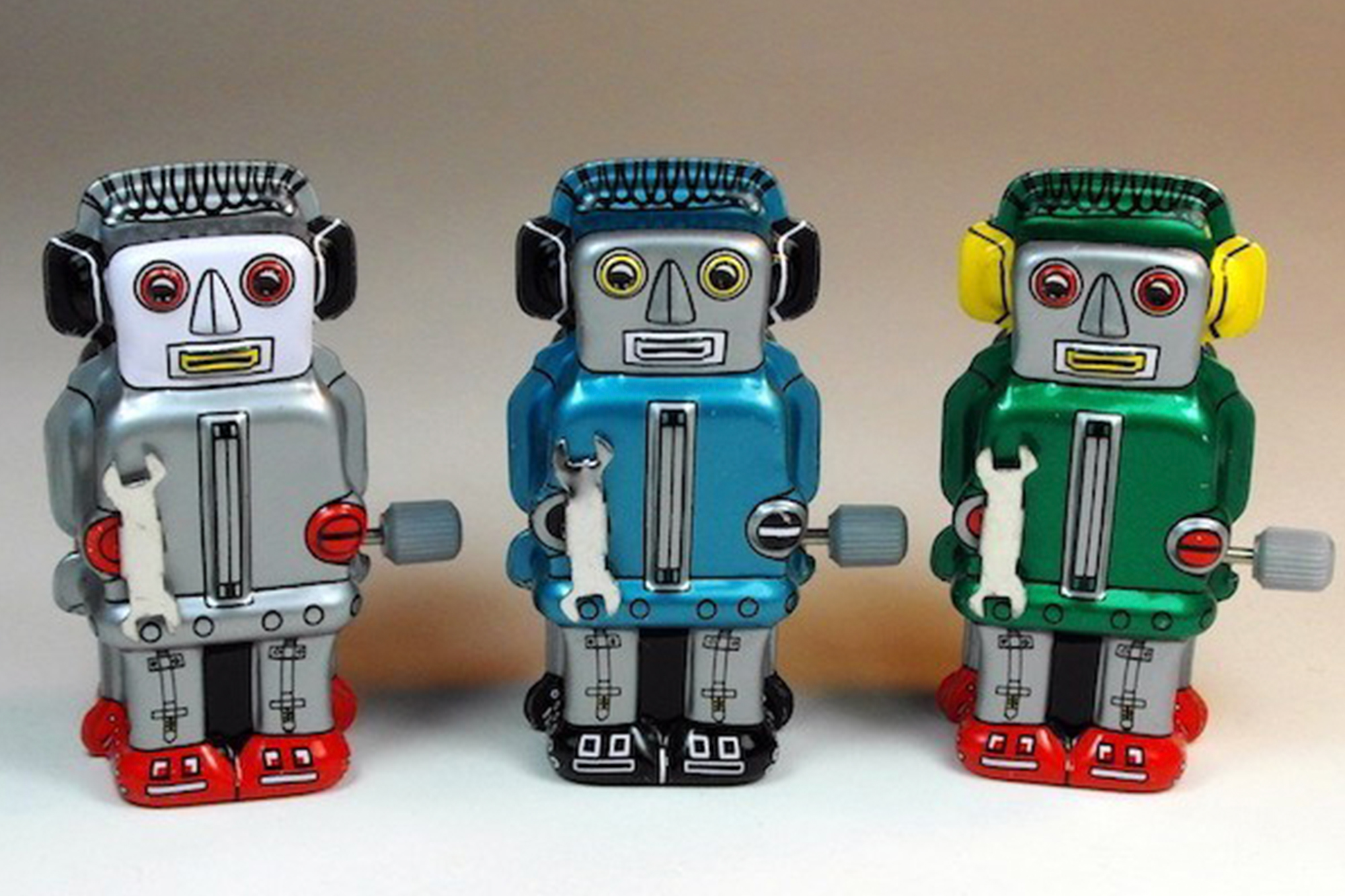

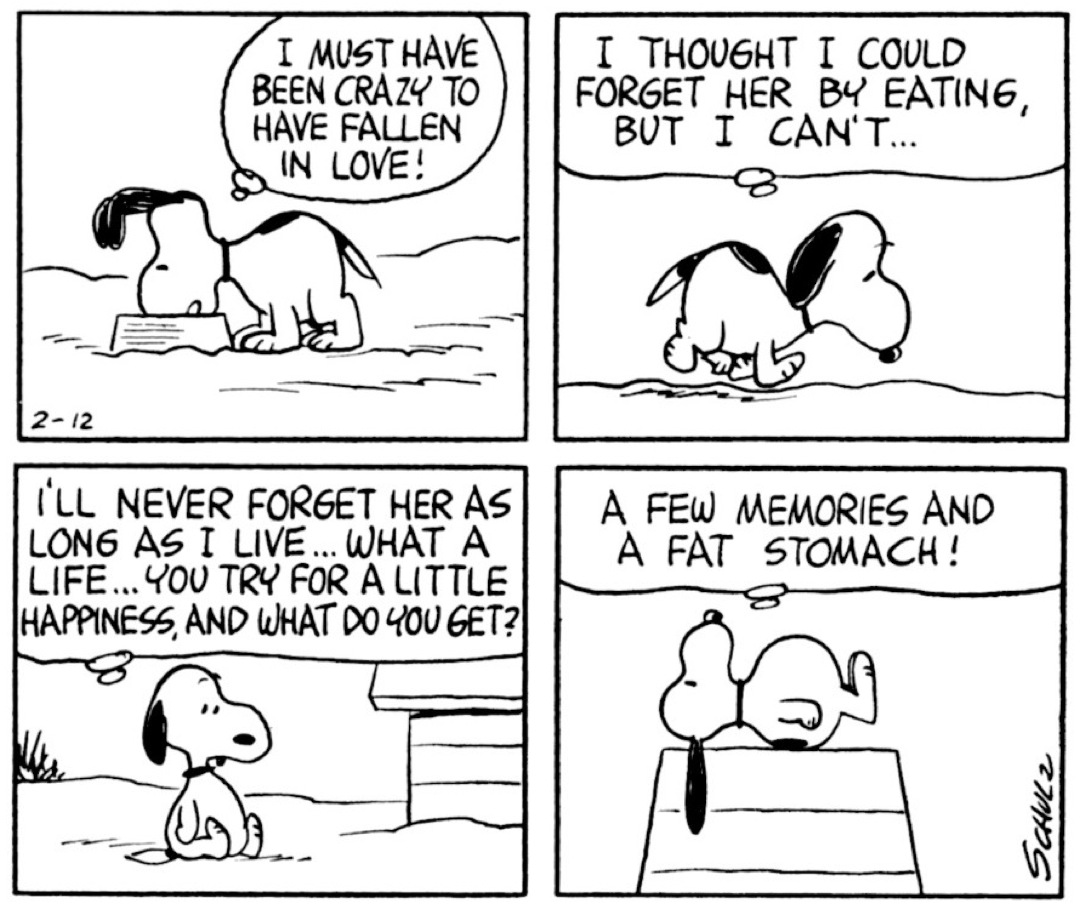
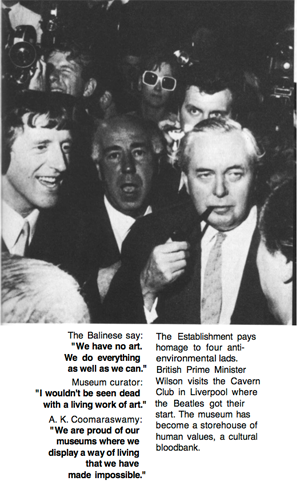











 H
H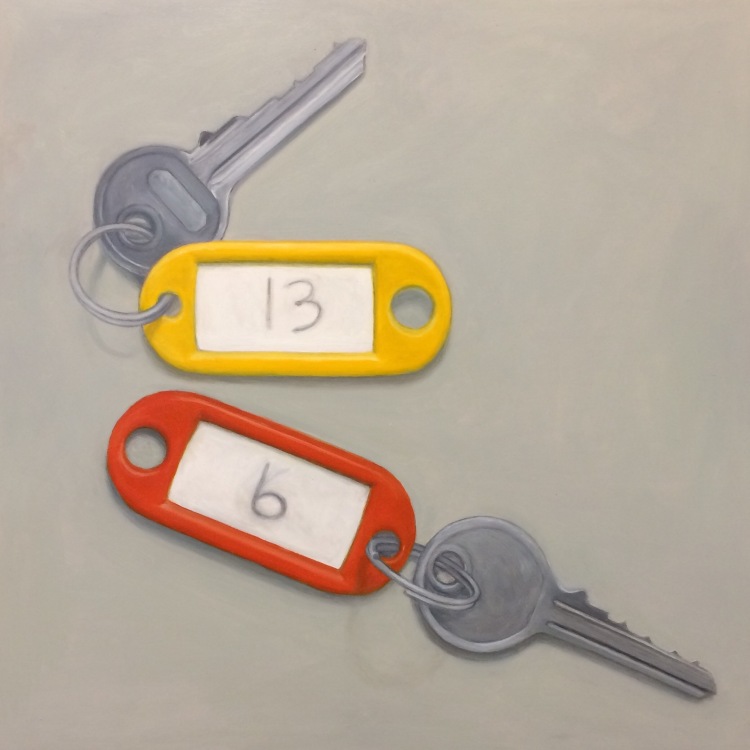
 Memory of an Imagined Future 33 X 48″ Collaged digital image and graphite on panel. $1200
Memory of an Imagined Future 33 X 48″ Collaged digital image and graphite on panel. $1200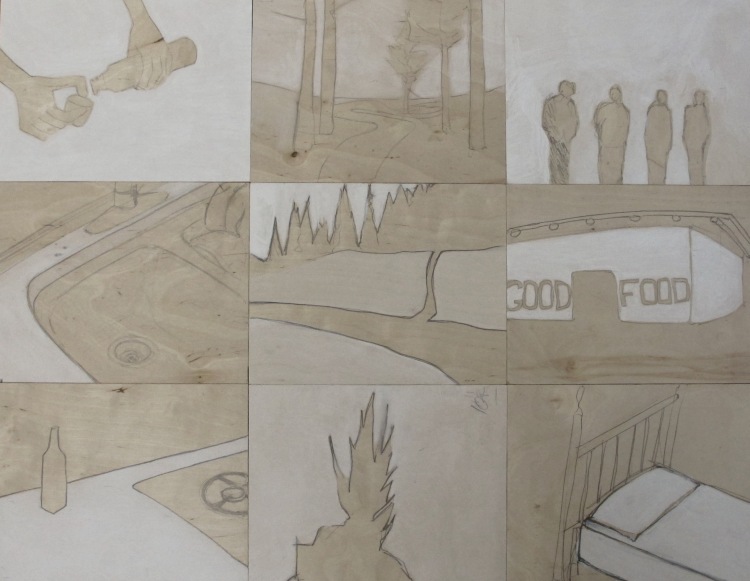 What I Did Today. 27 X 33″ oil and graphite on 9 wood panels. Now framed. $500
What I Did Today. 27 X 33″ oil and graphite on 9 wood panels. Now framed. $500 Insurmountable. Oil and graphite on paper 18 X 18″ $575 Framed
Insurmountable. Oil and graphite on paper 18 X 18″ $575 Framed Crumpled Into Sleep. 11.25 X 11.25″ Oil and graphite on paper $375 Framed SOLD
Crumpled Into Sleep. 11.25 X 11.25″ Oil and graphite on paper $375 Framed SOLD Ophelia. 14 X 14″ Graphite on paper. $475
Ophelia. 14 X 14″ Graphite on paper. $475


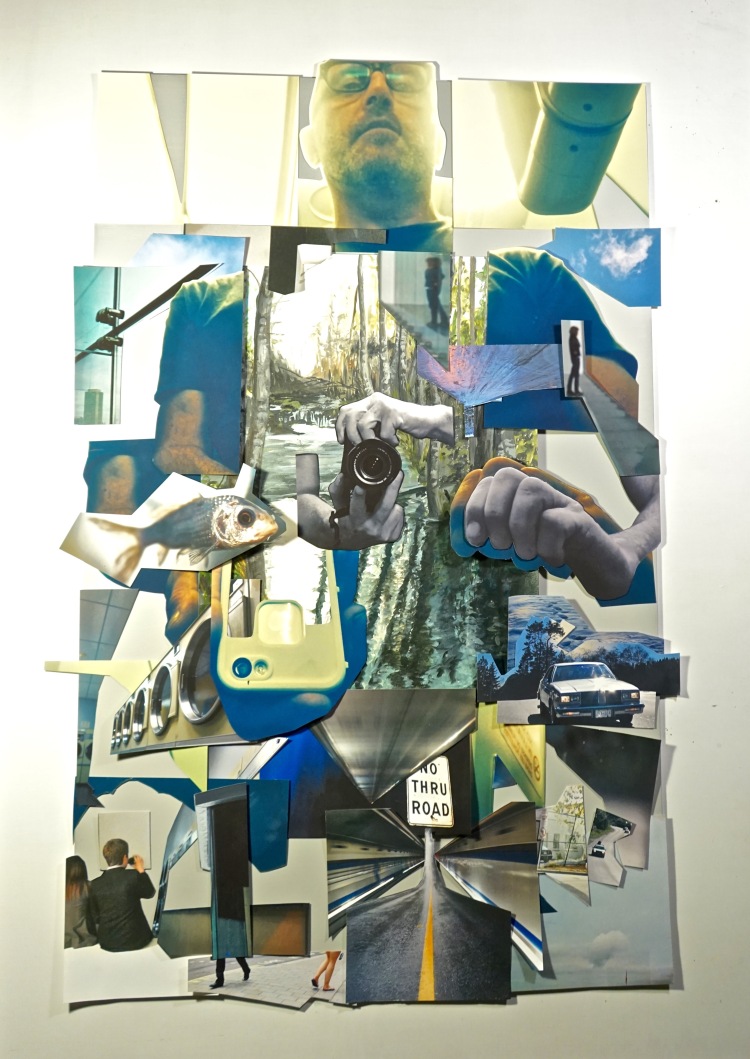 Cover image: a collage I made from images I had shown in an earlier installation with a bit of supersize me presiding at this point just mocked up! (currently showing at
Cover image: a collage I made from images I had shown in an earlier installation with a bit of supersize me presiding at this point just mocked up! (currently showing at  I started with the above image because it represents me in the big world I think; out in my snail shell home; the Land Rover, exploring the backroads of Vancouver Island .
I started with the above image because it represents me in the big world I think; out in my snail shell home; the Land Rover, exploring the backroads of Vancouver Island . Then this one; a work in progress currently called Beneath the Above. (58 X 58″ oil on linen) I think with this image I was trying to show the humbling process of trying to imitate nature; ‘still struggling with this one but I have a new angle that I’m throwing at it for an upcoming show at
Then this one; a work in progress currently called Beneath the Above. (58 X 58″ oil on linen) I think with this image I was trying to show the humbling process of trying to imitate nature; ‘still struggling with this one but I have a new angle that I’m throwing at it for an upcoming show at  …and really, who can compete with this kind of oneupmanship!
…and really, who can compete with this kind of oneupmanship! I think I then brought things back to basics with; what really does inspire us…
I think I then brought things back to basics with; what really does inspire us… …and then some more of my shoddy attempts of some kind of ownership; because isn’t that what art is… painting the deer you didn’t catch on the cave wall and crying yourself to sleep!
…and then some more of my shoddy attempts of some kind of ownership; because isn’t that what art is… painting the deer you didn’t catch on the cave wall and crying yourself to sleep! These guys have got more than a deer to chew on. I’ve always had a bit of a thing for the aviation industry, I mean who doesn’t love all the shining potential of a new journey swaddled in technology. It’s all getting a bit old now but we manage to keep dressing it up.
These guys have got more than a deer to chew on. I’ve always had a bit of a thing for the aviation industry, I mean who doesn’t love all the shining potential of a new journey swaddled in technology. It’s all getting a bit old now but we manage to keep dressing it up. On the topic of humans I followed this with another drawing; a common theme of mine; tables and chairs, not unlike discarded shoes they can always tell a bit of a story,
On the topic of humans I followed this with another drawing; a common theme of mine; tables and chairs, not unlike discarded shoes they can always tell a bit of a story, When I was a lad (Lancashire accent) we would go to the beach in Fleetwood (northwest England) and I would marvel at this building, probably wanted it too…Some kind of meteorological station I think. The theme of the Pecha Kucha was: “what inspires us”… I think this building got me thinking a bit.
When I was a lad (Lancashire accent) we would go to the beach in Fleetwood (northwest England) and I would marvel at this building, probably wanted it too…Some kind of meteorological station I think. The theme of the Pecha Kucha was: “what inspires us”… I think this building got me thinking a bit.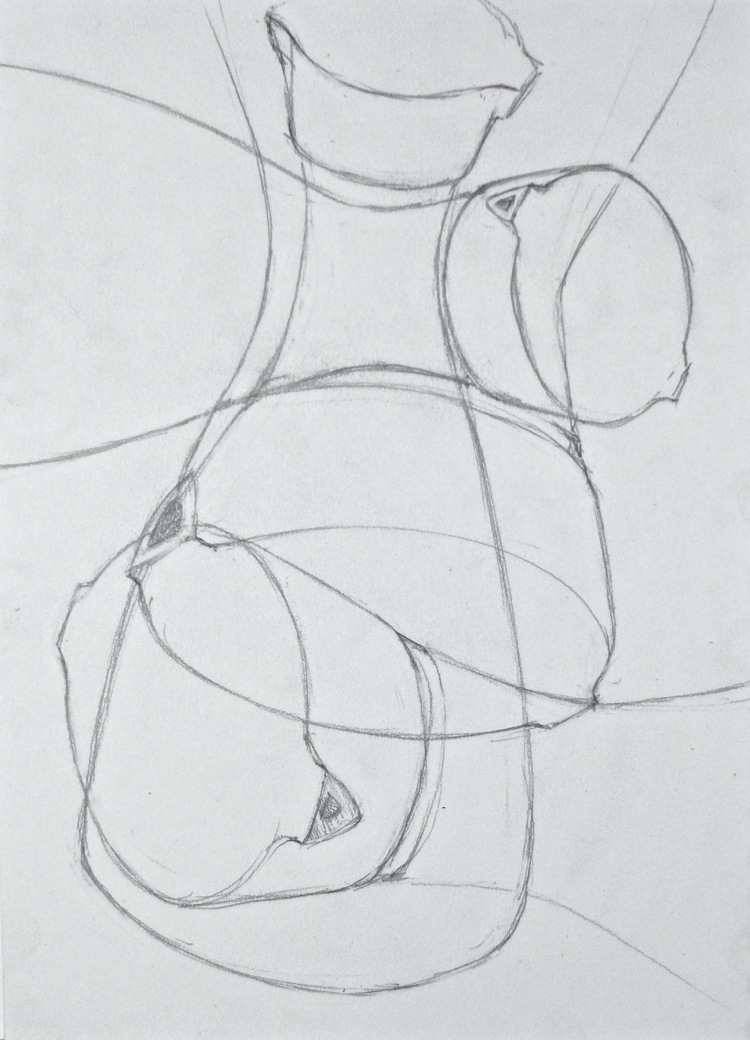 Our planet is natural, our world has been designed by someone, well a few people to be un-exact; there are so many beautiful and elegant designs that a lot of us might just take for granted…just the stuff thats always been around. The Kikkoman soy sauce bottle for example.
Our planet is natural, our world has been designed by someone, well a few people to be un-exact; there are so many beautiful and elegant designs that a lot of us might just take for granted…just the stuff thats always been around. The Kikkoman soy sauce bottle for example. …and then there’s always these minimalist masterpieces lying around all over the place for us to trip on.
…and then there’s always these minimalist masterpieces lying around all over the place for us to trip on. I think at the Pecha… the images got a little muddled but I think this one was next and this might have been where I froze up… I mean , what is there really to say about a highway junction. Do they still call them spaghetti junctions? I think I shot this flying out of Calgary one rainy time. (looks like a new meat packing plant going in over there too)
I think at the Pecha… the images got a little muddled but I think this one was next and this might have been where I froze up… I mean , what is there really to say about a highway junction. Do they still call them spaghetti junctions? I think I shot this flying out of Calgary one rainy time. (looks like a new meat packing plant going in over there too) A lot of how I shoot is done in a style I call “Drive-by Shooting” just hold the camera to the window and rattle off a few shots then see what you get later, one of the great benefits of digital… or is it? 2nd Ave and somewhere.
A lot of how I shoot is done in a style I call “Drive-by Shooting” just hold the camera to the window and rattle off a few shots then see what you get later, one of the great benefits of digital… or is it? 2nd Ave and somewhere.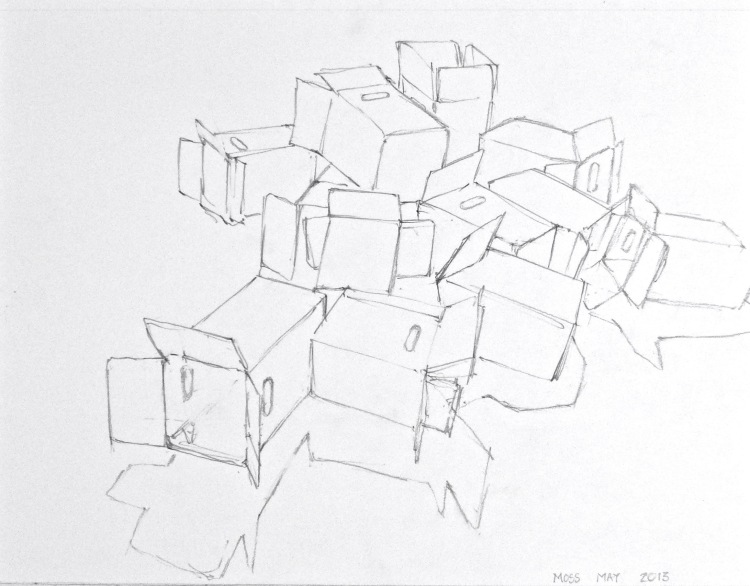 Often in my travels through daily life i see great inadvertent art, this is a sketch of some empty “drywall mud” boxes craftily arranged in a pile by our local dry wallers: “The Little Brothers”. I’m currently working this into a painting. (don’t let them know, they’ll probably want royalties) Said that like I actually sell paintings for stupid amounts of money, lol.
Often in my travels through daily life i see great inadvertent art, this is a sketch of some empty “drywall mud” boxes craftily arranged in a pile by our local dry wallers: “The Little Brothers”. I’m currently working this into a painting. (don’t let them know, they’ll probably want royalties) Said that like I actually sell paintings for stupid amounts of money, lol. I’m torn between finishing this now or nipping out for a bottle of wine… ….It always impresses me how little, birds seem to need, they seem to spend quite a bit of time just flying around for the hell of it and to them weather, rain or shine is just weather. I think I titled this one ” Over Nowhere”
I’m torn between finishing this now or nipping out for a bottle of wine… ….It always impresses me how little, birds seem to need, they seem to spend quite a bit of time just flying around for the hell of it and to them weather, rain or shine is just weather. I think I titled this one ” Over Nowhere” Early morning departure, Logan
Early morning departure, Logan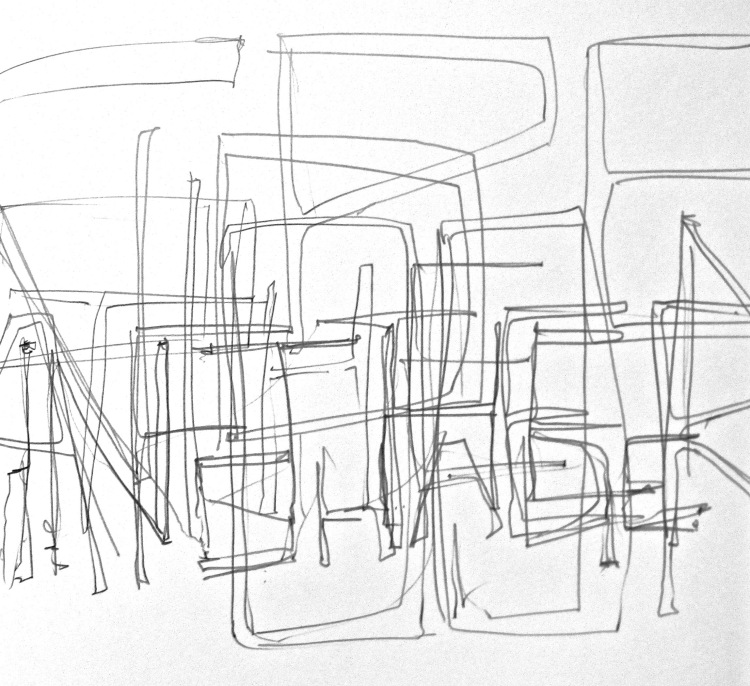 When I fly, unlike birds, I carry all kinds of stuff; the usual devices, a couple of half decent cameras and the trusty Moleskine sketch book. I also often carry portable drum machines and other electronics that often raise a concerned eyebrow from the flight crew (oh, it’s just a drum machine…). I order a couple of mini wines, get a buzz on, pull out my Moleskine and become a poet..! Well…, I write successive lines of random thought in a linear fashion (Some of these ramblings can be found @
When I fly, unlike birds, I carry all kinds of stuff; the usual devices, a couple of half decent cameras and the trusty Moleskine sketch book. I also often carry portable drum machines and other electronics that often raise a concerned eyebrow from the flight crew (oh, it’s just a drum machine…). I order a couple of mini wines, get a buzz on, pull out my Moleskine and become a poet..! Well…, I write successive lines of random thought in a linear fashion (Some of these ramblings can be found @  Every now and then I look out the window… The Arctic Ocean is a cold and lonely place.
Every now and then I look out the window… The Arctic Ocean is a cold and lonely place. It’s hard to fly without thinking of mortality, but even death can be beautiful.
It’s hard to fly without thinking of mortality, but even death can be beautiful. There are dizzying myriad ways to negotiate this life, it’s hard not to be inspired. “Don’t Despair” could be a title for my last image but it’s just a drawing of an inspired young organic farmer making some extra bucks by modelling at a life drawing session.
There are dizzying myriad ways to negotiate this life, it’s hard not to be inspired. “Don’t Despair” could be a title for my last image but it’s just a drawing of an inspired young organic farmer making some extra bucks by modelling at a life drawing session.












